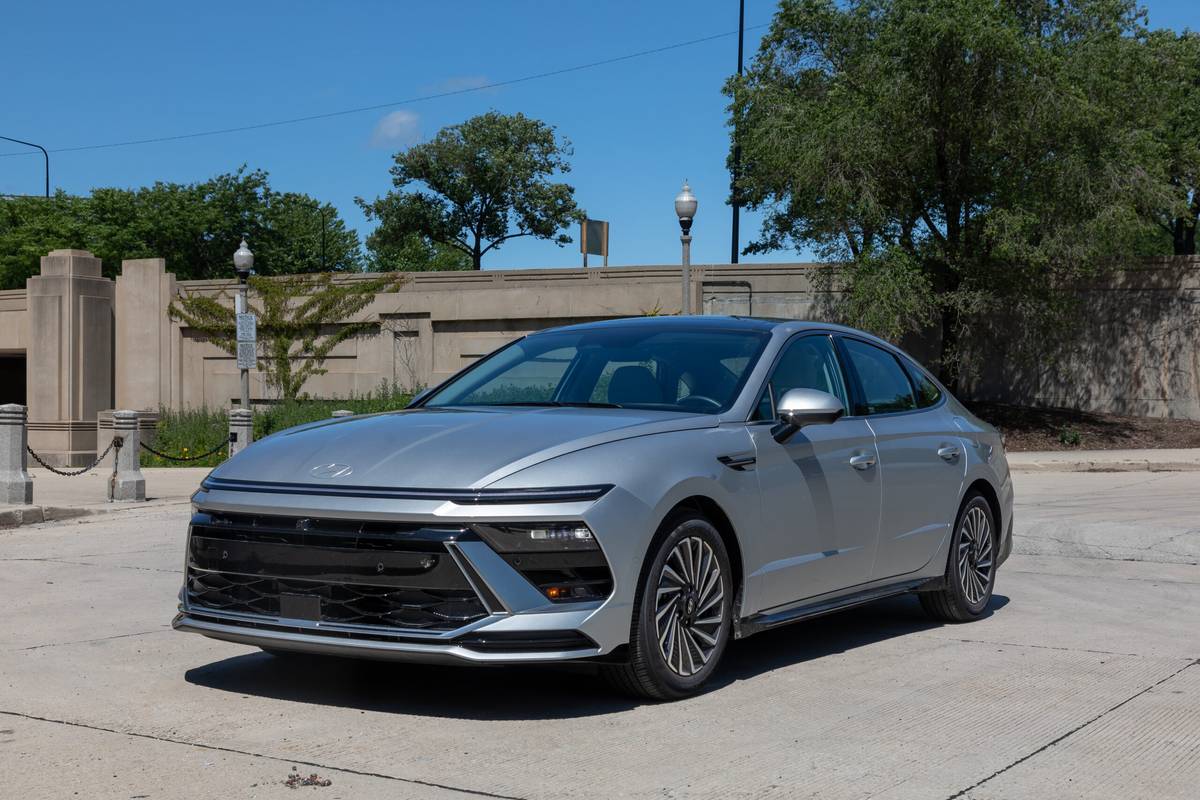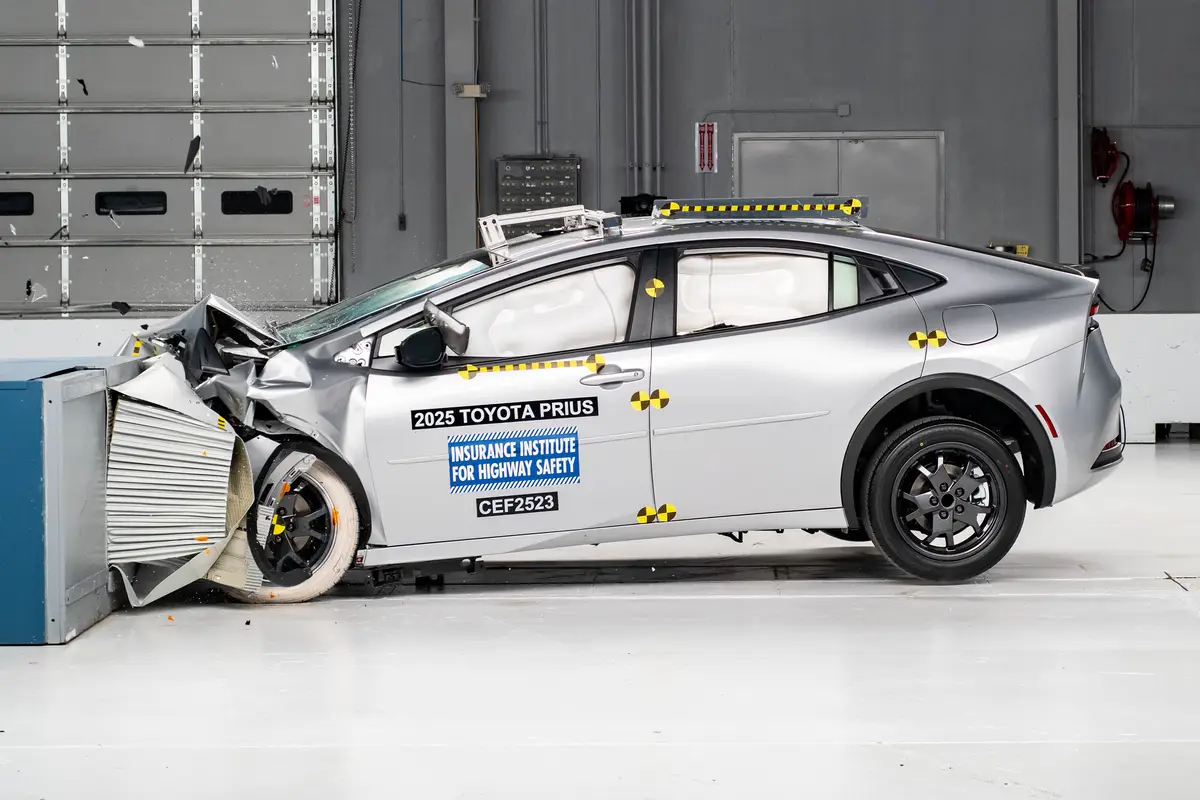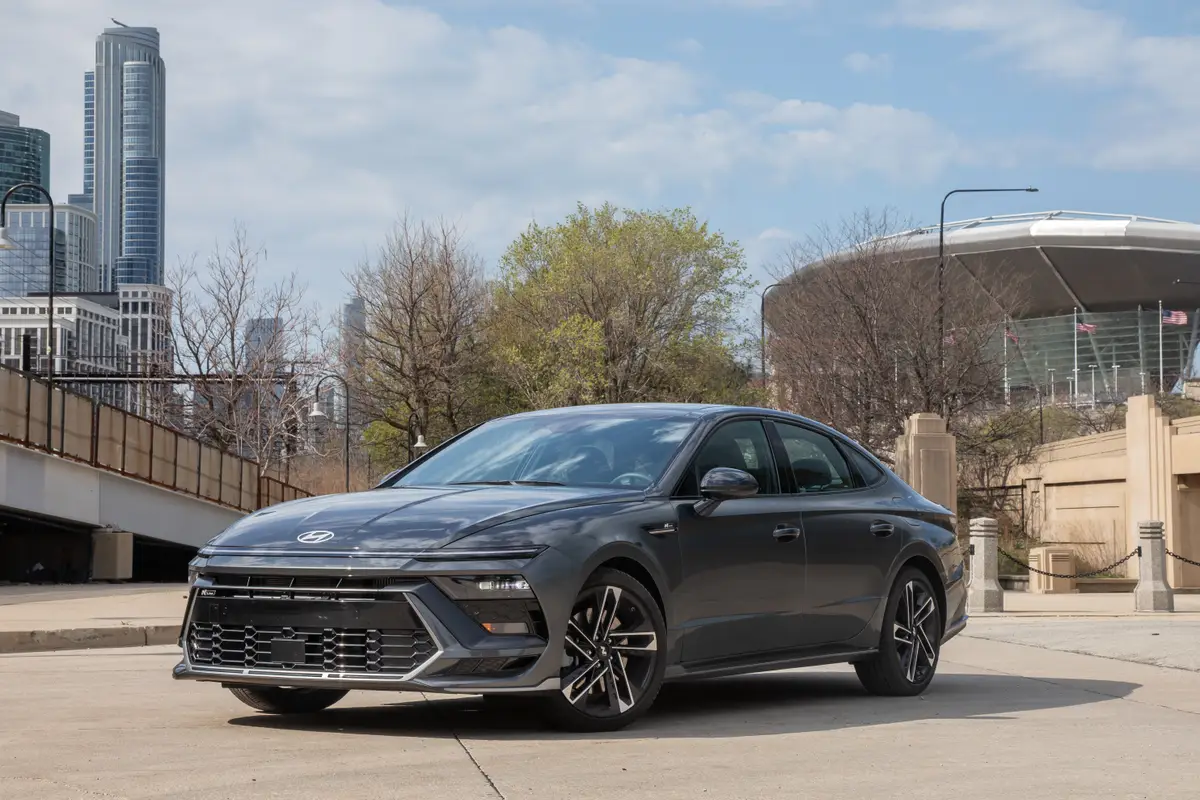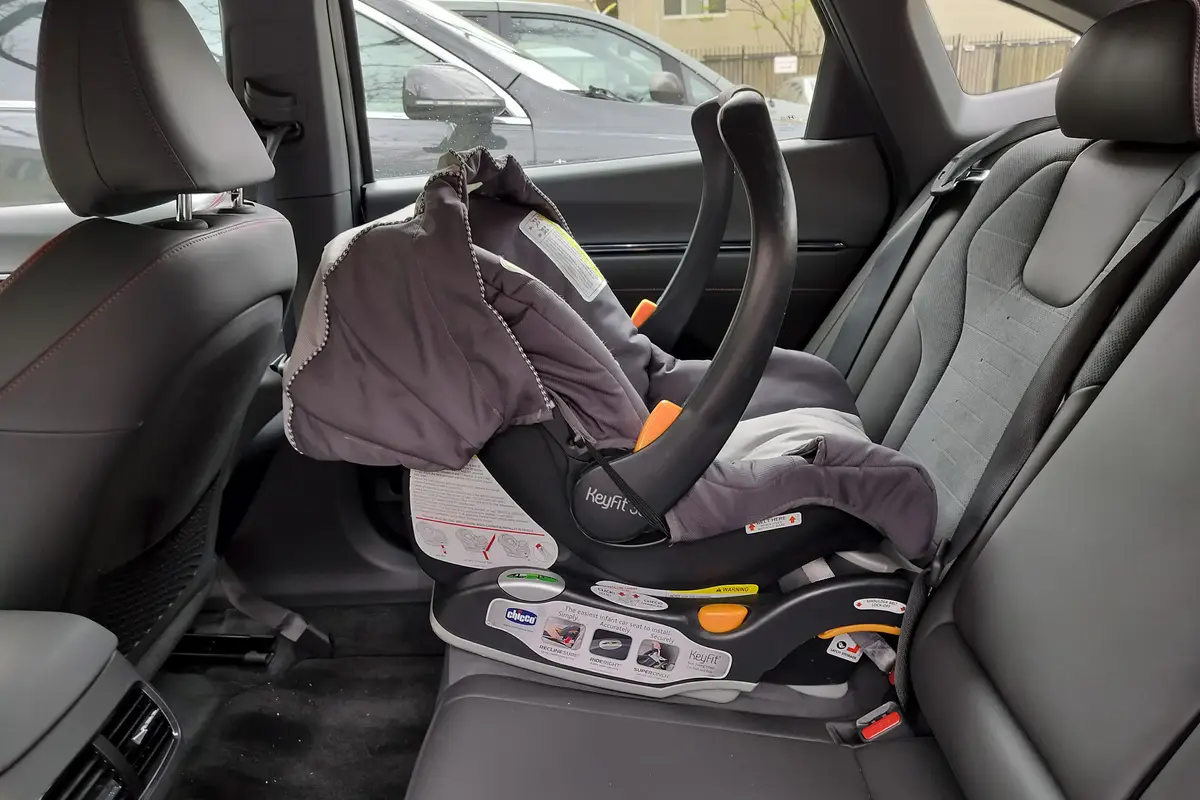Hyundai SONATA
This content was created using generative artificial intelligence powered only by Cars.com articles and edited by Cars.com’s Editorial team for accuracy.
Hyundai has continually refined its Sonata mid-size sedan to keep pace in the competitive family sedan class, always placing a big emphasis on value and, in more recent years, swoopy styling. Currently offered with a choice of gas or hybrid drivetrains, the Sonata is backed by one of the most generous warranties available: 10 years or 100,000 miles of powertrain coverage. Overall, the Sonata is ideally suited to practical shoppers and small families.
2020-2025 SONATA
With its bold front end and coupelike roofline, the redesigned 2020 Sonata’s exterior design was dramatic in the same way the 2011 Sonata was when it debuted. A 191-horsepower, 2.5-liter four-cylinder was the base engine, while a turbocharged four-cylinder powered

2025








































































































- MSRP range
- $26,900–$35,500
- Consumer rating
-
(3 reviews) - Combined mpg
- 27–32
- Body style
- Sedan
- Five-seat mid-size sedan
- 192-hp, 2.5-liter four-cylinder engine
- Front- or all-wheel drive
- Gas-electric hybrid version available
- 290-hp N Line trim available
2024
































































































- MSRP range
- $27,500–$34,950
- Consumer rating
-
(4 reviews) - Combined mpg
- 27–29
- Body style
- Sedan
- Five-seat mid-size sedan
- Front- or all-wheel drive
- Updated for 2024
- New multimedia system
- New digital instrument panel
- Gas-electric hybrid version available
- 290-hp N Line trim available
2023
































































































































































































































- MSRP range
- $25,100–$35,325
- Consumer rating
-
(7 reviews) - Combined mpg
- 27–32
- Body style
- Sedan
- Five-seat mid-size sedan
- Choice of three four-cylinder engines
- Eight-speed automatic transmission
- Gas-electric hybrid version available
- 290-hp N Line trim available
2022




























































































































































































































































































































































































- MSRP range
- $24,150–$34,750
- Consumer rating
-
(9 reviews) - Combined mpg
- 27–32
- Body style
- Sedan
- Five-seat mid-size sedan
- Choice of three four-cylinder engines
- Eight-speed automatic standard
- Automatic emergency braking standard
- Gas-electric hybrid version available
- 290-hp N Line trim available
2021
























































































































































































































































































































- MSRP range
- $23,950–$33,950
- Consumer rating
-
(50 reviews) - Combined mpg
- 27–32
- Body style
- Sedan
- New 290-hp N Line trim level
- Five-seat mid-size sedan
- Choice of three four-cylinder engines
- Eight-speed automatic standard
- Gas-electric hybrid version available
- Solar-charging roof available (Sonata Hybrid)
2020


























































































































































































































































- MSRP range
- $23,600–$33,500
- Consumer rating
-
(111 reviews) - Combined mpg
- 31–32
- Body style
- Sedan
2015-2019 SONATA
The Sonata’s exterior took on a tamer look with its 2015 redesign, but it didn’t stay that way for long; Hyundai redid the car’s front end for 2018, replacing the understated grille with a gaping design. A 2.4-liter four-cylinder remained standard, but a new turbocharged

2019
















































































































































































































































- MSRP range
- $22,650–$32,250
- Consumer rating
-
(157 reviews) - Combined mpg
- 26–31
- Body style
- Sedan
- Five-seat mid-size sedan
- Hybrid and plug-in hybrid versions available
- Three gas engines, including two turbos
- Apple CarPlay, Android Auto standard
- Automatic emergency braking available
2018
















































































































































































































































































































































































































- MSRP range
- $22,050–$32,450
- Consumer rating
-
(373 reviews) - Combined mpg
- 26–31
- Body style
- Sedan
- Mid-size, front-wheel-drive sedan
- Refreshed styling, interior for 2018
- Seats five
- Three gas engines, including two turbos
- Hybrid and plug-in hybrid versions
- New eight-speed automatic
2017


























































































































































































































































































- MSRP range
- $21,600–$34,350
- Consumer rating
-
(447 reviews) - Combined mpg
- 24–31
- Body style
- Sedan
- Five-seat midsize sedan
- Standard backup camera
- Available automatic braking
- Choice of four-cylinder engines, including two turbocharged options
- Hybrid version available
- Apple CarPlay and Android Auto standard
2016


























































































































































































































































































- MSRP range
- $21,300–$34,075
- Consumer rating
-
(197 reviews) - Combined mpg
- 26–32
- Body style
- Sedan
- Five-seat midsize sedan
- New standard features, including backup camera
- Automatic braking now available
- Choice of four-cylinder engines, including two turbocharged options
- Hybrid version available
- Apple CarPlay and Android Auto standard
2015


















































































































































































































































- MSRP range
- $21,150–$33,525
- Consumer rating
-
(310 reviews) - Combined mpg
- 25–32
- Body style
- Sedan
- New love it/hate it ''tailored'' design
- Apple CarPlay coming soon
- Hybrid replaced with gas-powered Eco version
2011-2014 SONATA
Dramatic new coupe-like styling marked Hyundai's redesigned 2011 Sonata, which was much sleeker than not just its predecessor, but most of its competitors. Offered in GLS, SE and Limited trim levels, the Sonata's adventurous design carried over to the interior. The available

2014








































































































































































































































- MSRP range
- $21,450–$28,650
- Consumer rating
-
(159 reviews) - Combined mpg
- 25–28
- Body style
- Sedan
- Revised exterior, new features for 2014
- Standard selectable steering modes
- Available high-power turbo four-cylinder
- Six-speed automatic
2013


















































































































































































































- MSRP range
- $20,895–$27,595
- Consumer rating
-
(345 reviews) - Combined mpg
- 26–28
- Body style
- Sedan
- High-efficiency four-cylinder engine
- High-power turbo four-cylinder
- Six-speed automatic
- Heated seats for most trims
- Hybrid version offered
2012




























































































































































































































































































































































































- MSRP range
- $19,795–$28,195
- Consumer rating
-
(220 reviews) - Combined mpg
- 26–28
- Body style
- Sedan
- High-efficiency four-cylinder engine
- High-power turbo four-cylinder
- Six-speed manual or automatic
- Hybrid version offered
2011










































































































































































































































































































































- MSRP range
- $19,395–$27,245
- Consumer rating
-
(340 reviews) - Combined mpg
- 26–28
- Body style
- Sedan
- All-new exterior and interior design
- High-efficiency four-cylinder engine
- Six-speed manual or automatic transmission
2006-2010 SONATA
The redesigned 2006 Sonata featured more conventional styling and helped solidify Hyundai's reputation for value with things like a standard electronic stability system and six standard airbags. A 162-hp, 2.4-liter four-cylinder engine was standard, while a 235-hp V-6 was

2010




































































































































































































































- MSRP range
- $18,700–$26,550
- Consumer rating
-
(69 reviews) - Combined mpg
- 22–25
- Body style
- Sedan
- Six airbags
- Standard stability system
- Standard USB and MP3 jacks
- Optional navigation system
2009




































































































































































































































- MSRP range
- $18,700–$26,550
- Consumer rating
-
(104 reviews) - Combined mpg
- 22–25
- Body style
- Sedan
- Mildly restyled for 2009
- Redesigned interior
- Six airbags
- Standard stability system
- Standard USB and auxiliary input jacks
- Newly optional navigation system
2008






























































































































- MSRP range
- $17,670–$24,170
- Consumer rating
-
(67 reviews) - Combined mpg
- –
- Body style
- Sedan
- Standard stability system
- Six airbags standard
- Standard active head restraints
- Standard antilock disc brakes
- Optional 3.3-liter V-6
2007




































































































































- MSRP range
- $17,195–$23,445
- Consumer rating
-
(99 reviews) - Combined mpg
- –
- Body style
- Sedan
- Standard stability system
- Six airbags standard
- Standard active head restraints
- Standard antilock disc brakes
- 3.3-liter V-6 option
2006










































































































































- MSRP range
- $17,895–$22,895
- Consumer rating
-
(117 reviews) - Combined mpg
- –
- Body style
- Sedan
- Standard stability system
- Six airbags standard
- Active head restraints standard
- Standard antilock disc brakes
- Five-speed automatic option
- 3.3-liter V-6 option
1999-2005 SONATA
This Sonata was powered by a standard 2.4-liter four-cylinder or an optional 2.5-liter V-6, both of which worked with a standard five-speed manual or an optional four-speed automatic transmission. A facelift for the 2002 model year also saw the addition of a larger V-6 engine, which

2005




































































































































- MSRP range
- $16,449–$20,299
- Consumer rating
-
(36 reviews) - Combined mpg
- –
- Body style
- Sedan
- Four-cylinder or V-6
- Standard side-impact airbags
- 10-year/100,000-mile powertrain warranty
2004


















































































































- MSRP range
- $15,999–$19,799
- Consumer rating
-
(35 reviews) - Combined mpg
- –
- Body style
- Sedan
- Four-cylinder or V-6
- Shiftronic automatic-transmission operation
- Standard side-impact airbags
- 10-year/100,000-mile powertrain warranty
2003


















































































































- MSRP range
- $15,499–$19,374
- Consumer rating
-
(24 reviews) - Combined mpg
- –
- Body style
- Sedan
2002


















































































































- MSRP range
- $15,499–$18,824
- Consumer rating
-
(30 reviews) - Combined mpg
- –
- Body style
- Sedan
2001




- MSRP range
- $14,999–$19,124
- Consumer rating
-
(16 reviews) - Combined mpg
- –
- Body style
- Sedan
2000
































- MSRP range
- $14,999–$17,499
- Consumer rating
-
(13 reviews) - Combined mpg
- –
- Body style
- Sedan
1999




- MSRP range
- $14,999–$17,799
- Consumer rating
-
(2 reviews) - Combined mpg
- –
- Body style
- Sedan
1995-1998 SONATA
The 1995 Sonata came standard with a 2.0-liter four-cylinder rated at 128 hp. A 3.0-liter V-6 was optional. The four-cylinder’s output increased to 137 hp in 1996. By the end of this generation’s run, most trim levels had a four-speed automatic transmission.

1998












- MSRP range
- $14,749–$18,549
- Consumer rating
-
(1 review) - Combined mpg
- –
- Body style
- Sedan
1997






















- MSRP range
- $14,749–$18,549
- Consumer rating
-
(2 reviews) - Combined mpg
- –
- Body style
- Sedan
1996


















- MSRP range
- $14,199–$18,199
- Consumer rating
-
- Combined mpg
- –
- Body style
- Sedan
1995






- MSRP range
- $13,849–$17,849
- Consumer rating
-
(3 reviews) - Combined mpg
- –
- Body style
- Sedan
1992-1994 SONATA

1994
- MSRP range
- –
- Consumer rating
-
- Combined mpg
- –
- Body style
- Sedan
1993




- MSRP range
- $12,399–$15,339
- Consumer rating
-
(1 review) - Combined mpg
- –
- Body style
- Sedan
1992




- MSRP range
- $11,150–$15,535
- Consumer rating
-
- Combined mpg
- –
- Body style
- Sedan
Latest SONATA stories
All Hyundai SONATA trims by year
2025 Hyundai SONATA trims 2024 Hyundai SONATA trims 2023 Hyundai SONATA trims 2022 Hyundai SONATA trims 2021 Hyundai SONATA trims 2020 Hyundai SONATA trims 2019 Hyundai SONATA trims 2018 Hyundai SONATA trims
2017 Hyundai SONATA trims 2016 Hyundai SONATA trims 2015 Hyundai SONATA trims 2014 Hyundai SONATA trims 2013 Hyundai SONATA trims 2012 Hyundai SONATA trims 2011 Hyundai SONATA trims 2010 Hyundai SONATA trims 2009 Hyundai SONATA trims 2008 Hyundai SONATA trims 2007 Hyundai SONATA trims 2006 Hyundai SONATA trims 2005 Hyundai SONATA trims 2004 Hyundai SONATA trims 2003 Hyundai SONATA trims 2002 Hyundai SONATA trims 2001 Hyundai SONATA trims 2000 Hyundai SONATA trims 1999 Hyundai SONATA trims 1998 Hyundai SONATA trims 1997 Hyundai SONATA trims 1996 Hyundai SONATA trims 1995 Hyundai SONATA trims 1994 Hyundai SONATA trims 1993 Hyundai SONATA trims 1992 Hyundai SONATA trims
All Hyundai models
Equus Excel Genesis Genesis Coupe IONIQ 5 IONIQ 5 N IONIQ 6 IONIQ 9 IONIQ EV IONIQ Hybrid IONIQ Plug-In Hybrid KONA KONA EV Kona N NEXO PALISADE SANTA CRUZ SANTA FE SANTA FE HEV Santa Fe Plug-In Hybrid Santa Fe Sport Santa Fe XL Scoupe SONATA SONATA Hybrid Sonata Plug-In Hybrid Tiburon TUCSON TUCSON Hybrid TUCSON Plug-In Hybrid Veloster Veloster N VENUE Veracruz XG300 XG350





